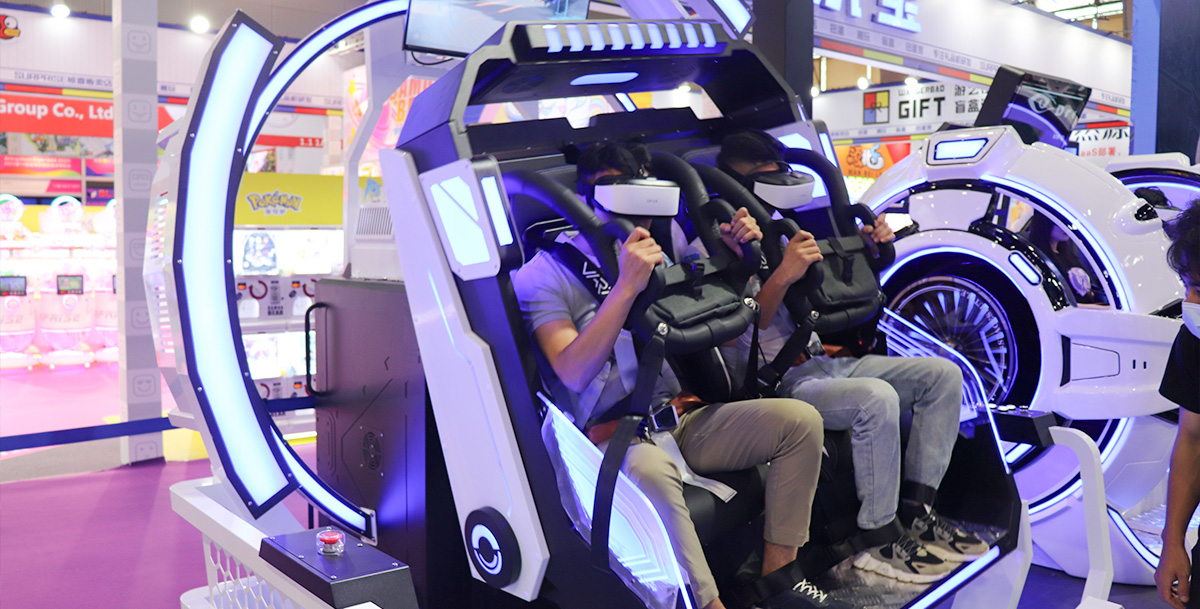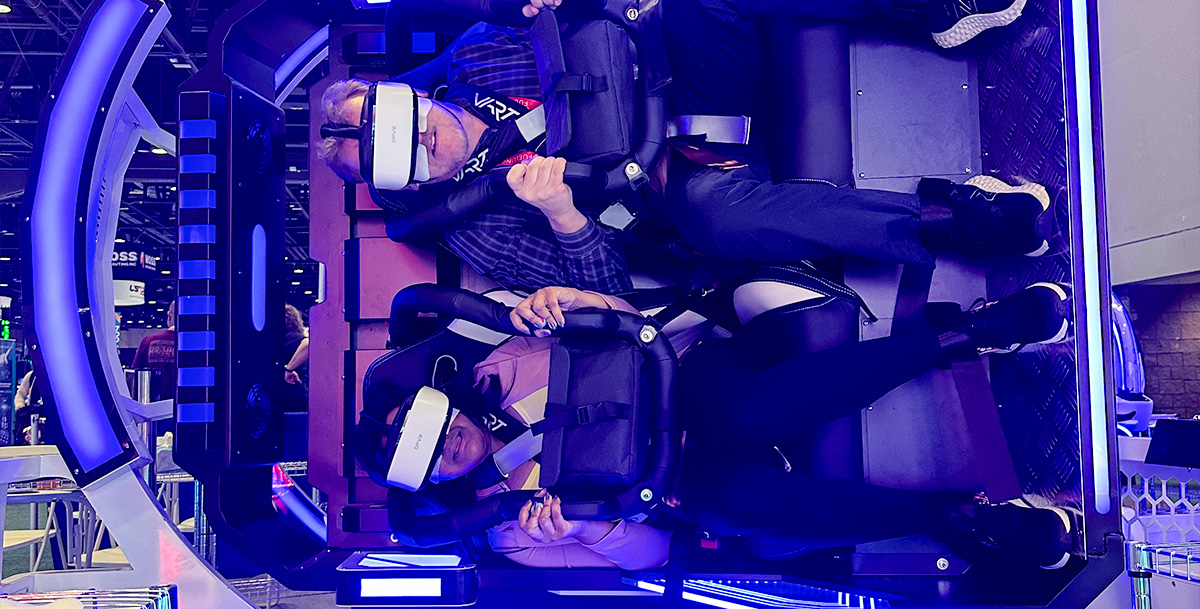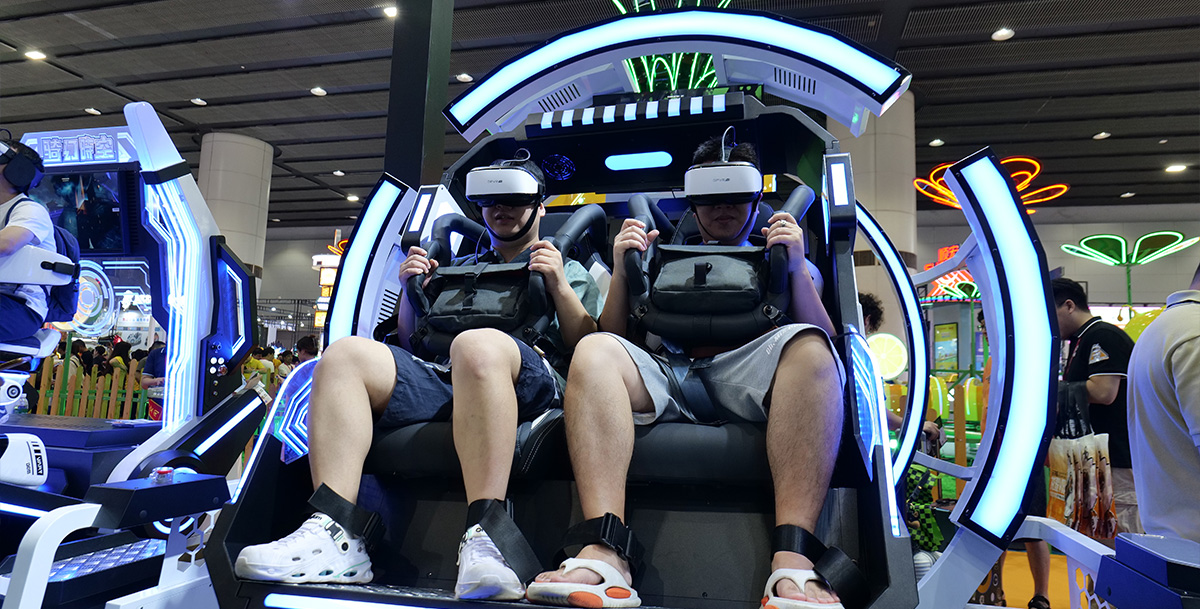Introduction
As virtual reality continues to expand across global entertainment markets, the VR 360 Chair has become one of the most influential innovations shaping consumer experiences. From shopping malls and VR arcades to family entertainment centers, this powerful VR machine delivers full-motion simulation, 360-degree rotation, and high-definition VR content that attracts guests of all ages.
However, while players enjoy the thrill of flying, falling, drifting, and spinning, operators and investors often want to understand the technology beneath the surface—because technical engineering directly affects durability, safety, and long-term profitability.
In this article, we break down the entire engineering foundation of a 360 VR simulator, including motion platform design, dual-seat synchronization, VR headset rendering, machine safety architecture, power systems, and maintenance requirements. For clearer real-world understanding, we reference commercial models such as the VART 2-Seat VR 360 Chair, one of the leading dual-seat VR motion simulator solutions used in arcades, theme parks, and modern entertainment venues.
1. Core Engineering Structure of a VR 360 Chair
A professional VR Chair is built with the same engineering mindset as a theme-park motion ride—prioritizing strength, safety, and stability.
1.1 Heavy-Duty Steel Frame
The structural base of a commercial VR 360 Chair is made from industrial-grade steel, designed to support:
-
Repetitive 360-degree rotation
-
Sudden direction changes
-
Two adult passengers
-
Dynamic load from actuators or servo motors
-
High-frequency daily operation
This reinforced engineering prevents metal fatigue and ensures long-term durability. A strong structural base is essential for any VR motion platform technology, especially for full-rotation chairs.
2. Motion Platform Technology: The Heart of a VR 360 Chair
The reason a VR motion chair feels realistic is because of its integrated motion platform VR ride system. This combination of motors, actuators, and motion algorithms transforms VR content into lifelike movement.
2.1 Types of Motion Systems
Modern VR 360 Chairs commonly use three types of motion systems:
✓ Electric Servo Motors (Best Option)
-
High precision
-
Smooth acceleration
-
Long lifespan
-
Ideal for 360° movement
-
Widely used in high-end VR 360 motion systems
✓ Electric Linear Actuators
-
Strong lift and tilt
-
Reliable and stable
-
Good for rolling and pitching
-
Lower maintenance cost
✓ Hydraulic Systems
-
Powerful but outdated
-
Noisy and prone to leakage
-
More maintenance required
-
Less common in today’s VR simulator engineering
High-quality VR chairs (such as VART’s) use electric servo systems, providing the best motion accuracy and lowest maintenance.
2.2 360-Degree Freedom of Movement
A true 360 VR simulator supports:
-
Pitch (forward/backward tilt)
-
Roll (left/right tilt)
-
Yaw (full 360° spinning rotation)
This allows players to experience:
-
Airplane loops
-
Roller-coaster drops
-
Space spinning
-
Drift racing
-
Free-fall sensations
This is why many customers describe the VR 360 Chair as similar to a 360 flight simulator—intense, fast, and deeply immersive.
2.3 Motion Algorithm Synchronization
The VR chair motion algorithm is the software brain controlling movement.
It takes motion signals from the VR content and converts them into real-time commands for motors or actuators. This ensures:
-
Smoothness
-
Accurate timing
-
Zero-latency response
-
Perfect synchronization with the VR headset
A premium VR motion simulator must keep motion and visuals synced perfectly to avoid discomfort and improve realism.
3. Dual-Seat Synchronization: Engineering Precision at Its Best
The dual-seat VR simulator (2-seater configuration) is one of the most popular formats because it balances capacity, footprint, and operational efficiency.
3.1 How Dual Motion Synchronization Works
Advanced dual-seat motion synchronization uses:
-
A master controller
-
Multi-axis synchronization module
-
High-precision sensors
-
Real-time motion correction
Both seats move at the exact same speed, angle, and intensity—even during fast 360° rotations.
This engineering is a key advantage of commercial-grade systems like the VART 2-Seat VR 360 Chair, which are built for heavy daily use in malls and arcades.
4. VR Headsets and Rendering Technology
The VR headset is essential for immersion, and commercial chairs rely on optimized VR devices designed for motion rides.
4.1 High-Resolution Headsets
A good VR Chair uses:
-
4K or higher resolution
-
Wide field of view (110°–120°)
-
High refresh rates
-
Motion-sickness reduction lenses
-
Fast tracking
These reduce discomfort and improve image quality—critical for long-term operation.
4.2 VR Content Integration
VR content for motion chairs contains:
-
Visual environment
-
Motion data
-
4D effects mapping
-
Audio synchronization
Typical experiences include:
-
Space exploration
-
Roller coaster VR
-
Racing simulation
-
Horror scenarios
-
Jungle adventure
-
Flying VR tours
This diverse content library enhances replay value and keeps the VR machine fresh.
5. Multi-Sensory 4D Effects
High-end VR Chairs add physical sensations that match the on-screen action:
-
Wind effects (fans)
-
Vibrating seat panels
-
Low-frequency rumble motors
-
Immersive sound system
These 4D features make the ride more dynamic and increase customer satisfaction.
6. Safety Architecture: The Most Important Technical Component
A professional VR 360 Chair is engineered with multi-level safety mechanisms.
6.1 Physical Safety
-
Seat belts
-
Reinforced frame
-
Anti-pinch design
-
Smooth edges
6.2 Motion Safety
-
Automatic motion limiters
-
Over-rotation protection
-
Motor overheating sensors
-
Real-time error alerts
6.3 Operational Safety
-
Emergency stop button
-
Software fault detection
-
System self-checking
-
Operator control panel
These systems meet commercial requirements for malls, arcades, and theme parks, ensuring safe daily operation.
7. Power System and Stability
A reliable VR 360 motion system requires stable electricity.
Typical specs:
-
AC 110–220V
-
1500–3000W
-
Surge protection
-
Cooling fans
-
Ventilation channels
Proper power engineering guarantees stable rotation and long-term performance.
8. Maintenance, Durability, and Daily Operation
A commercial VR arcade machine must be durable and easy to maintain.
Daily checks include:
-
Tightening belts
-
Cleaning VR headsets
-
Checking wire connections
-
Inspecting motion joints
-
Updating VR content
-
Reviewing error reports
High-quality VR chairs can run 10–12 hours per day for many years with minimum downtime.
9. Why Engineering Quality Equals Higher Profit?
A well-built VR machine directly increases revenue:
-
Fewer failures = more uptime
-
Smooth motion = better customer reviews
-
Safer system = fewer complaints
-
Reliable parts = lower maintenance cost
-
High-quality VR content = higher repeat rate
This is why professional operators choose models like the VART 2-Seat VR 360 Chair, built for heavy commercial use.
10. Conclusion
Understanding how a VR 360 Chair works helps investors make smarter decisions.
From motion platform engineering and dual-seat synchronization to 4D effects and safety systems, every technical detail contributes to the overall performance and long-term profitability of the machine.
To explore a commercial-grade, globally installed solution, visit:
VART 2-Seat VR 360 Chair Product Page
Post time: Nov-14-2025



